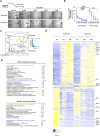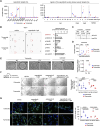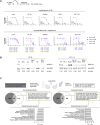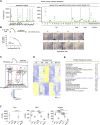Autophagy inhibition improves sensitivity to the multi-kinase inhibitor regorafenib in preclinical mouse colon tumoroids
- PMID: 40772227
- PMCID: PMC12325355
- DOI: 10.3389/fcell.2025.1631116
Autophagy inhibition improves sensitivity to the multi-kinase inhibitor regorafenib in preclinical mouse colon tumoroids
Abstract
Colorectal cancer (CRC) remains the second leading cause of cancer-related deaths worldwide, with its incidence continuing to rise. Regorafenib, a multi-kinase inhibitor approved for palliative treatment, has been shown to extend survival in patients with metastatic CRC (mCRC) who have failed standard therapies. However, its clinical benefit is limited to a subset of patients, is typically short-lived, and is often accompanied by significant toxicity. The mechanisms by which CRC cells develop resistance to regorafenib remain incompletely understood. In this study, we investigated the mechanisms of regorafenib resistance using a preclinical mouse colon organoid model. Transcriptomic analysis of Apc wild-type and Apc-deficient organoids treated with regorafenib revealed upregulation of epithelial-to-mesenchymal transition (EMT), alterations in the secretome, and increased activation of phosphorylated Erk1/2. Notably, co-treatment with an autophagy inhibitor suppressed regorafenib-induced EMT and its associated secretory phenotype, leading to reduced cell proliferation and enhanced apoptosis in mouse organoids. The efficacy of this drug combination was further supported by cell viability assays in human CRC cell lines. In contrast, primary mouse colon fibroblasts exhibited greater resistance to both single-agent and combination regorafenib treatments. In summary, our findings using an organoid model suggest that autophagy inhibition may represent a promising strategy to overcome chemoresistance to regorafenib in mCRC patients.
Keywords: EMT; autophagy; chemoresistance; colorectal cancer; fibroblasts; organoids; regorafenib; tumoroids.
Copyright © 2025 Agostini, Leprovots, Jeandriens, Lefort, Libert, Sclafani, Langer, Hendlisz and Garcia.
Conflict of interest statement
The authors declare that the research was conducted in the absence of any commercial or financial relationships that could be construed as a potential conflict of interest.
Figures






References
LinkOut - more resources
Full Text Sources
Miscellaneous

